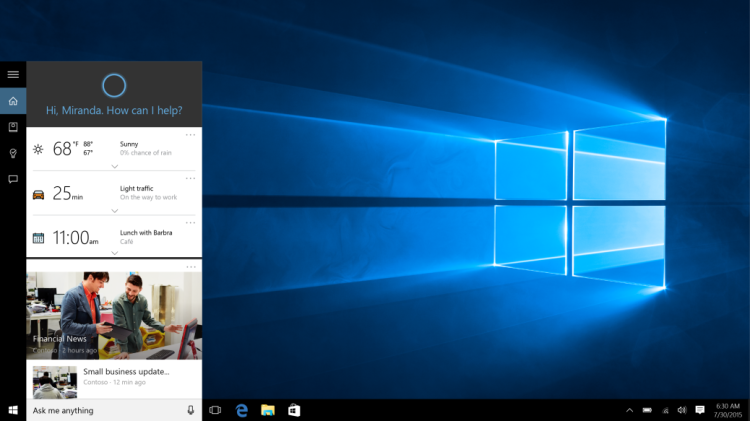In the last few years, commercial organizations have relied heavily on immersive technology, effectively transforming operations, and even market competition. The internet makes cross-device integration increasingly common, particularly as more devices become connected. And as it becomes easier to connect with one another, the lines between reality and the digital world are increasingly blurred.
Immediate benefits
Although artificial intelligence (AI) and machine learning were huge buzzwords in 2016, in the coming year we expect to see even more cloud users become accustomed to dealing with bots and synchronize their lives and operations to include digital assistants.
Last year, Google and Microsoft added more powerful AI services to their cloud platforms. Salesforce’s AI-infused analytics service attracted startups, such as travel site Gogobot, who used AI in their new apps. These platforms allow anyone with preliminary coding knowledge to create and deploy simple chatbots, enabling small startups that otherwise lacked the bandwidth to create their own bots. People are already syncing their data to the cloud. On a larger scale, employing digital bots means saving money and time usually spent on manual syncing or classifying data.
In 2016, many larger software vendors were working to retrofit conversational user experiences and machine learning capabilities into their solutions. However, going forward, new software will include those capabilities baked in, resulting in the convergence of conversational user experiences with augmented solutions designed with sophisticated self-learning capabilities.
In 2017, this will give birth to a completely new type of software, constructed with intelligence as a fundamental design criterion rather than an afterthought. There will be even more proactive, dramatic involvement of bots in our daily lives, allowing end users to focus on their jobs, instead of on the mechanics of maintaining data, and offering new competitive advantages for companies who use the technology. We are now in an era when people want to achieve more for less, and the trends toward virtual reality and augmented reality are changing the landscape of technology.
Consumer bots today
The best-known consumer bots so far are Cortana, Amazon Echo, and Siri. But 2016 trends show that we will see the emergence of technology that is simpler to use and less complex than the digital assistants of today. As technology rapidly transforms our daily lives, we’re seeing demand from users who want to simplify interaction with their enterprise systems in the workplace. Technology is shifting to accommodate more accessible communication between man and machine.
Markets and Markets’ recent research predicts that by 2020, the AI market will skyrocket to $5.05 billion. This coming year, instead of filling predefined forms, users will take advantage of AI with easy language and communication services on familiar platforms such as Slack, Yammer, Facebook, and Twitter.
This will be useful in allowing employees and remote companies to work more easily with each other and in more structured ways. As enterprises continue to operate through cloud-based systems, 2017 will be considerably easier in terms of performing digital tasks.
Automated tasks
Functions such as expense reports, time sheets, and other historic data will become more automated and streamlined. This will allow skilled workers to focus more on core competencies. In other words, AI and bots will bring increased efficiency and productivity, not to mention fewer operating costs and improved service for customers across the globe.
In fact, AI will become so important to companies that research firm Gartner predicts an increase of spending to $3.5 trillion on IT globally in 2017. This will be seen first in increased investments in the coming year and will grow rapidly as we move into the increasingly tech-friendly future.
For commercial organizations, the coming year will bring a new source of competitive advantage — for the public sector, the ability to achieve more for less. For companies that want to step up their efficiency and productivity by liberating employees from tedious chores so they can invest in serving their customers, it’s worth considering how AI and digital assistants can be put to work.
VentureBeat's mission is to be a digital town square for technical decision-makers to gain knowledge about transformative enterprise technology and transact. Learn More

